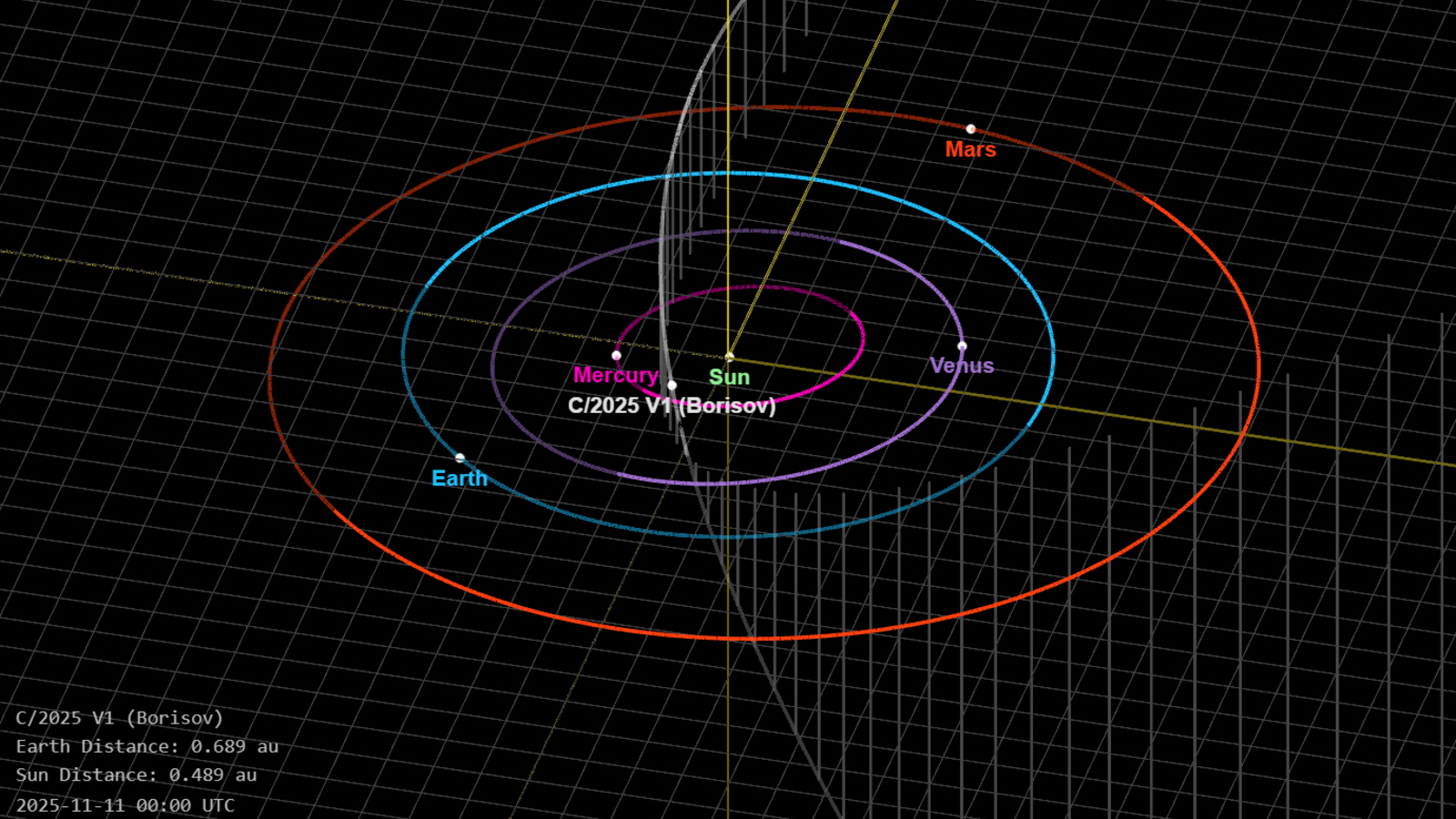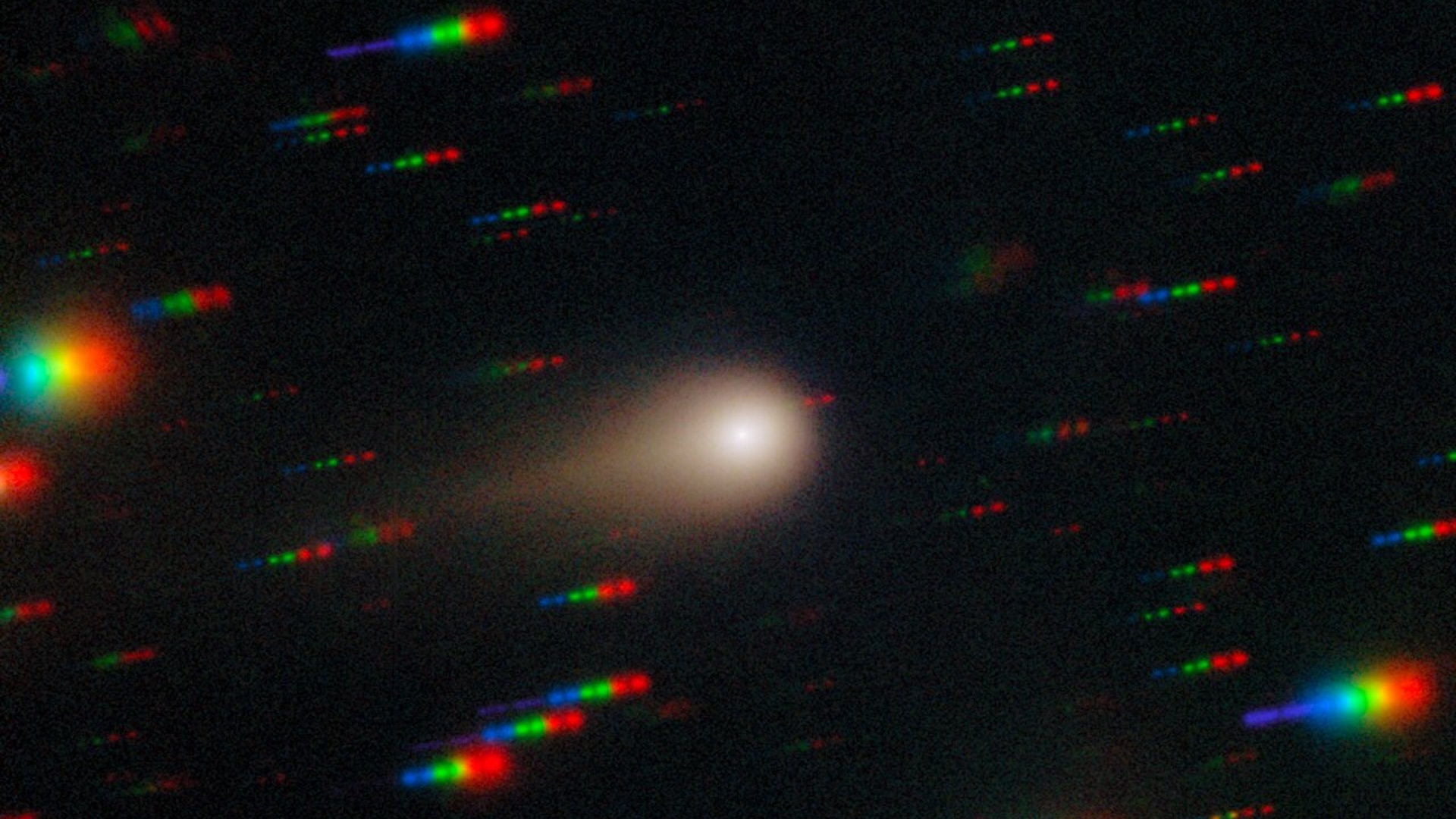New 'nearly interstellar' comet — wrongly linked to 3I/ATLAS — will reach its closest point to Earth on Tuesday (Nov. 11)
Newly discovered comet C/2025 V1 (Borisov), which has some minor similarities to 3I/ATLAS, will make its closest approach to Earth on Tuesday (Nov. 11). However, despite recent rumors, the two objects are not related to one another.

A never-before-seen comet that shares some minor similarities with the infamous interstellar object 3I/ATLAS is about to make its closest approach to our planet just a few days after it was first spotted speeding toward us.
However, despite some suggestions to the contrary, the newly discovered comet is not related to our current interstellar visitor, and almost certainly originated within the solar system.
The new comet, named C/2025 V1 (Borisov), was first spotted on Nov. 2 by the Crimea-based amateur astronomer Gennadiy Borisov. It will reach its closest point to Earth on Tuesday (Nov. 11), when it will reach a minimum distance of 64 million miles (103 million kilometers) from our planet, or around 270 times further away than the moon, according to Orbital Today. It is set to reach its closest point to the sun, or perihelion, on Sunday (Nov. 16).
C/2025 V1 has an apparent magnitude of around 13.8, making it too faint to be seen with the naked eye. However, the new comet may be visible to stargazers with a decent telescope or a pair of stargazing binoculars. It is currently located in the constellation Virgo and is most clearly visible just before sunrise, according to TheSkyLive.com.

If the name "Borisov" rings a bell, it’s because Gennadiy Borisov also discovered the second-known interstellar object (ISO), dubbed "Comet Borisov," in 2019. Like 3I/ATLAS, which was first spotted in early July, this alien comet was ejected by a faraway star in the Milky Way and sailed through space for billions of years before coincidentally shooting right through our cosmic neighborhood at incredibly high speeds.
This association, along with some additional anomalous characteristics, was enough for some to draw comparisons between C/2025 V1 and 3I/ATLAS. They included the renowned Harvard University astrophysicist and alien-hunter Avi Loeb, who described it as a "nearly interstellar object" in a recent blog post.
How can an object be "nearly interstellar"? It comes down to its orbit. C/2025 V1 is slightly unusual, given its high eccentricity, meaning that it is traveling toward the sun along a very straight trajectory. This is similar to, although not as extreme as, the trajectory of 3I/ATLAS — and is the main reason for the latest comparisons, Loeb wrote. Like in some recent photos of 3I/ATLAS, the new comet also appears to be missing its tail, he added.
Get the world’s most fascinating discoveries delivered straight to your inbox.
C/2025 V1 was discovered while 3I/ATLAS was still temporarily hidden from us, due to it being positioned on the opposite side of the sun to Earth. This has led some new outlets to speculate that C/2025 V1 could be an alien probe that was secretly deployed by its "mothership" 3I/ATLAS, which is a theory that was first postulated by Loeb shortly after the latest ISO was discovered.
However, in his latest post, Loeb downplayed this idea, writing that "C/2025 V1 is not related to 3I/ATLAS if it did not employ non-gravitational propulsion." The distance between the two objects at their minimum separation was also around 140 million miles (225 million km), which is likely too great to explain an association between them, he added.

Instead, the new comet likely originates from the Oort Cloud — a giant reservoir of comets and other icy objects located near the outer edge of the solar system. However, its origin point and orbital trajectory have not yet been properly calculated.
As for 3I/ATLAS, the alien comet has now reappeared from its short stint behind the sun, having reached perihelion on Oct. 29. This solar flyby was notable for several other reasons, including an unexpected brightening event and a temporary color change. It has now started its journey back out of the solar system and will reach its closest point to Earth on Dec. 19.
The ISO has displayed a number of other anomalous characteristics, including a highly irradiated surface and a puzzling anti-tail. However, despite what some people claim, there is no reliable evidence that 3I/ATLAS is anything other than a comet — just like C/2025 V1.

Harry is a U.K.-based senior staff writer at Live Science. He studied marine biology at the University of Exeter before training to become a journalist. He covers a wide range of topics including space exploration, planetary science, space weather, climate change, animal behavior and paleontology. His recent work on the solar maximum won "best space submission" at the 2024 Aerospace Media Awards and was shortlisted in the "top scoop" category at the NCTJ Awards for Excellence in 2023. He also writes Live Science's weekly Earth from space series.
You must confirm your public display name before commenting
Please logout and then login again, you will then be prompted to enter your display name.


